At Burke & Redford Orthodontists, it is a priority for our doctors to fully explain what to expect during treatment, and we also want to list the most common terms surrounding orthodontic care. This helps bring comfort and peace of mind to the patient, which is important to us.
While the specific terms discussed below are not exhaustive, they are some of the most used in an orthodontist’s office. Dr. Redford and Dr. Burke are happy to explain any term a patient may be unfamiliar with during your consultation appointment or at any stage of treatment.
Important Terms in Orthodontic Practice
The following article outlines terms and their explanations for a clearer understanding of the top orthodontic words and phrases you might come across while being treated in our practice.
Appliance
An appliance is a general term used when referring to things such as braces, expanders, bite correctors, or clear aligners. It is used to describe any orthodontic device, whether it is removable or fixed (glued in).
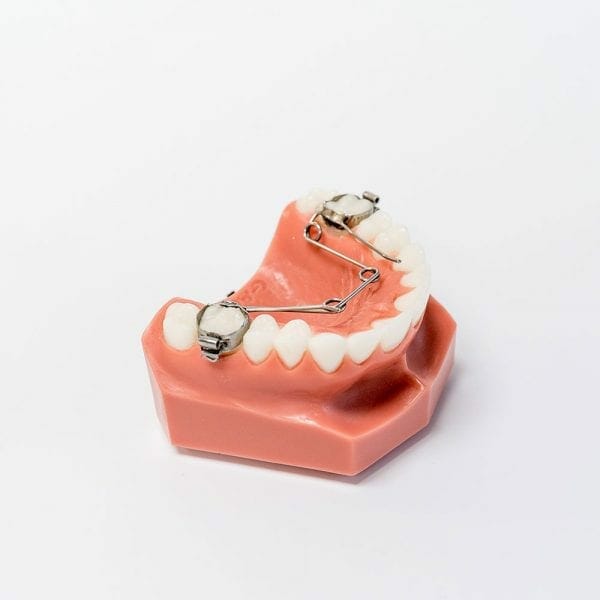
Archwire
This is the wire that extend across each of the braces from one side of the mouth to the other. In full braces there is a top and a bottom archwire. It is the archwire that provides the force to move teeth.
Band
A band is a ring-shaped brace that fully encircles a tooth. While these used to be used on all teeth, they are now only used on the furthest back teeth and only in certain situations. They also are commonly used as the anchor point to back teeth in appliances like expanders and space maintainers.
Bite plate
A bite plate is a small appliance used in overbite cases to establish the appropriate amount of vertical overlap of the front teeth. Bite plates are also helpful in preventing the patient from biting into the lower braces during the initial stages of treatment.
Bonding
Bonding is the process whereby the brackets are adhered to each tooth using an orthodontic adhesive (glue).
Bracket
The tiny square shaped object that is applied to each individual tooth is called a bracket. Brackets function as the anchor point on each of the teeth. These anchor points then interact with an archwire that serves to move the teeth. Self-ligating brackets hold the archwire securely with a tiny clasp built into each bracket. Brackets may be metal, tooth-colored, ceramic, or clear.
Crossbite
A crossbite occurs when upper and lower teeth do not fit together appropriately. A posterior crossbite describes upper back teeth that sit inside of the opposing lower back teeth when biting down. An anterior crossbite occurs when the upper front teeth set behind the lower front teeth while biting down.

Diastema
A diastema is any gap existing between adjacent teeth. This most commonly occurs between the upper front center teeth (central incisors).
E-chain
E Chain (also known as power chain) is an elastic that runs across two or more brackets to aid in closing gaps between adjacent teeth. This is placed by the orthodontist and then “fixed” in place until the patient is seen for their subsequent adjustment appointment.
Elastic
An elastic is a tiny rubber band available in both latex and latex-free versions that aid in bite correction. These are removable and placed by the patients themselves with specific direction from the orthodontist.
Headgear
An appliance that uses either the neck or forehead and chin as an anchor point to move teeth and jaws. Headgear devices are not used to straighten teeth, but instead to influence jaw growth and bite relationships. They are removable.
Impaction
Impaction is when a tooth is stuck (either completely or partially) below the level of the gum tissue in the mouth. This is a serious orthodontic problem and can result in the roots of nearby teeth being damaged and/or the need for surgical intervention to recover the impacted teeth.
Impressions
An impression refers to a mold made of the patient’s teeth. A model of the teeth and surrounding structures can then be made which assists the orthodontist in constructing a treatment plan and making appliances that are custom made to the individual patient.
Intraoral scanner
An intraoral scanner is a device that enables the orthodontist to take a digital impression of a patient’s teeth. This eliminates the need for the gooey mold material used in traditional impressions.

Invisalign
Invisalign is an innovative tooth movement system whereby teeth are moved with white colored tooth attachments and clear trays instead of brackets and wires. In most cases, clear aligners work best with minor orthodontic issues given they are not as precise as bracket and wire systems. However, clear aligners have proven to be a nice appliance for patients who rule out other options.

Malocclusion
A malocclusion is a fancy term for a bad, or incorrect, bite. It refers to when upper and lower teeth (or jaws) do not fit together properly. Examples include crossbites, overbites, underbites, open bites, etc.
Maxilla and mandible
The upper and lower jaw, respectively.
Mixed dentition
The stage of development at which a child’s mouth has some baby teeth and some adult teeth at the same time.
O-ties
O-ties are the small colored elastics that surround each bracket. In self-ligating bracket systems, these serve no purpose other than being a fun decoration. In traditional braces, these serve to fasten the archwire to each individual bracket.
Overbite
An overbite (or deep bite) occurs when the top teeth extend excessively over the bottom set of teeth when biting down.
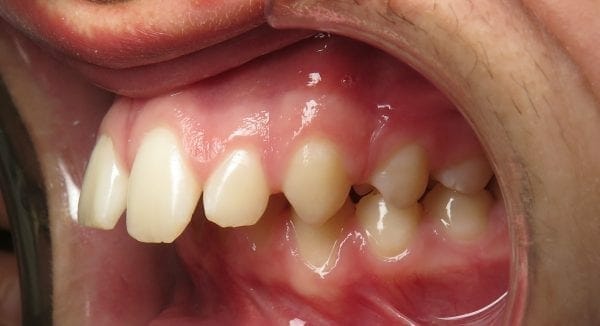
Overjet
Overjet describes the horizontal (front-to-back) space that frequently occurs between the edges of top and bottom front teeth. This is what most people refer to as “overbite”.
Open bite
An open bite is marked by a vertical space between the edges of top and bottom front teeth when biting down.
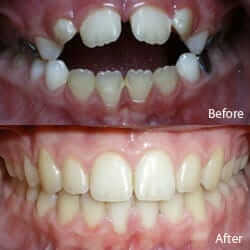
Palate
The top, or roof, of the mouth.
Palatal expander
In cases where a posterior crossbite is present, a palatal expander may be used to gently widen the growth plate that runs down the center of the upper jaw. Expansion is done until the upper jaw width matches that of the lower jaw. Palatal expanders can accomplish movements that self-ligating braces alone cannot.

This type of x-ray film gives the orthodontist a broad view of all teeth, jaws, and surrounding structures. It provides key information needed to plan an orthodontic case accurately and appropriately.

Protrusion
Protrusion occurs when the front teeth jut forward excessively. Some protruding may be so severe that they prevent the patient from closing the lips around the teeth comfortably. Poor diagnosis and planning of very crowded cases can result in teeth finishing excessively protrusive after straightening.
Retainer
A retainer is an appliance utilized to hold teeth in place after active orthodontic treatment is complete. These are made of either metal, plastic, or acrylic. Without the use of retainers, the teeth would almost certainly begin to shift and move out of place. In our practice we advise removable upper retainers and permanent lower retainers for most cases.
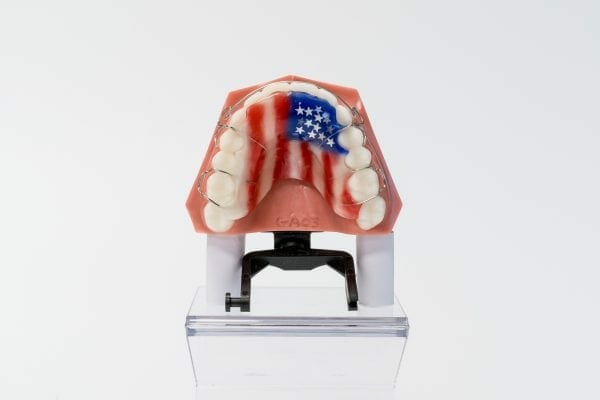
Self-ligation is a technology whereby the braces have a door built into each bracket to secure the archwire in place. While claims of less pain and faster tooth movement with self-ligating systems have been debunked as junk science by well-designed, peer-reviewed studies, they can make adjustment of the braces more efficient and allow for longer intervals between appointments.
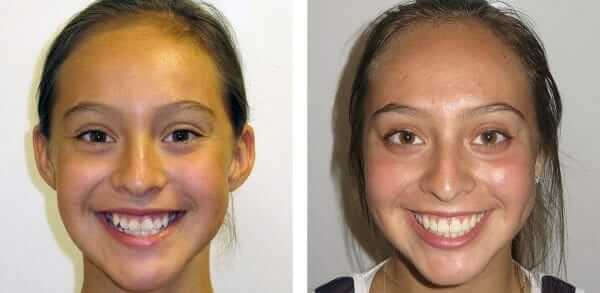
Space maintainer
A space maintainer is a fixed (glued in) appliance that acts to hold space for teeth that have not yet erupted through the gums. It is different from a retainer in that the main goal is not to hold teeth perfectly straight, but to keep space. These appliances are usually used while the patient is in the mixed dentition and prior to full braces.
If you have any questions regarding orthodontic care, please contact Burke & Redford Orthodontists today. A free consultation is offered to all new patients, as well as zero-financing options to make treatment affordable for all. You may call our offices in Temecula or Lake Elsinore at (951) 699-8011 during normal business hours.